Being immersed in the fitness industry provides me with a ton of different opportunities to experience different techniques, methodologies, and products. I recently had the privilege of a...
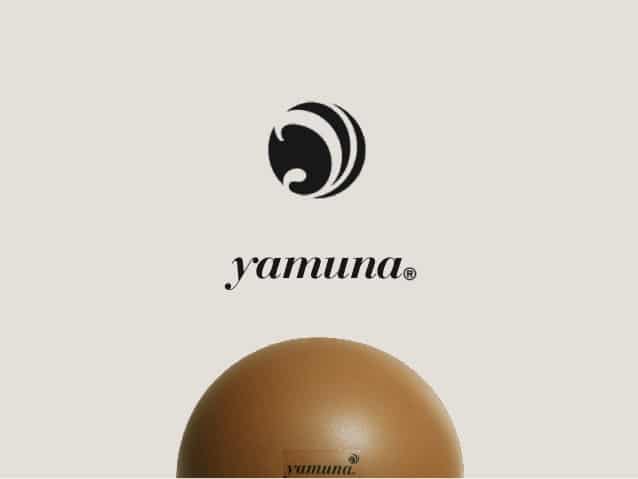

Being immersed in the fitness industry provides me with a ton of different opportunities to experience different techniques, methodologies, and products. I recently had the privilege of a...
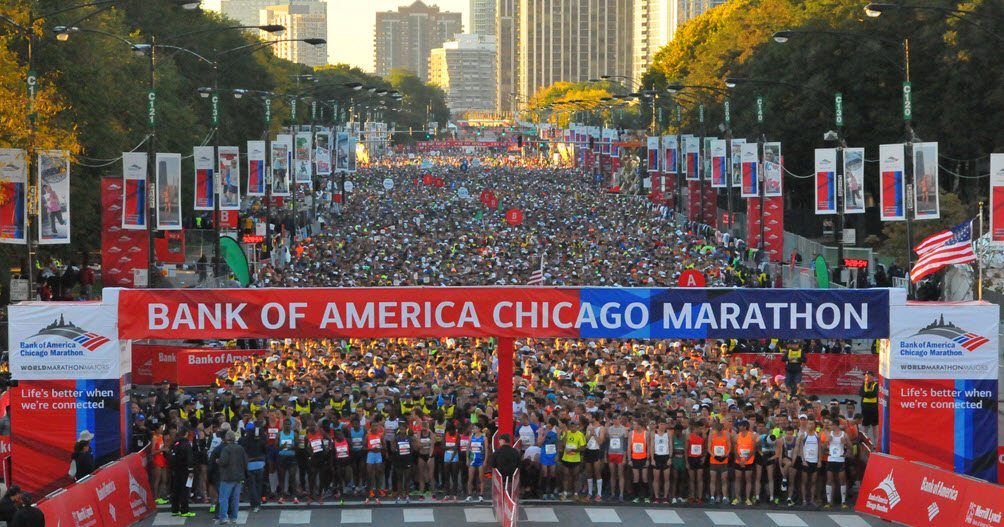
Leading up to the Chicago Marathon 2016 The Chicago Marathon provides an excellent course, plenty of support and, for me, a chance to visit home for a few days. It was no different for me this...
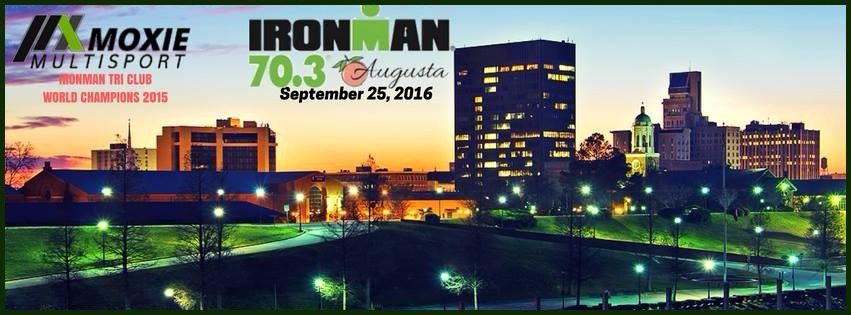
September 25 was going to be my day. The Ironman Augusta 70.3 triathlon was finally here. The race I had been training so hard for on one of my favorite courses. It was four-and-a-half months...
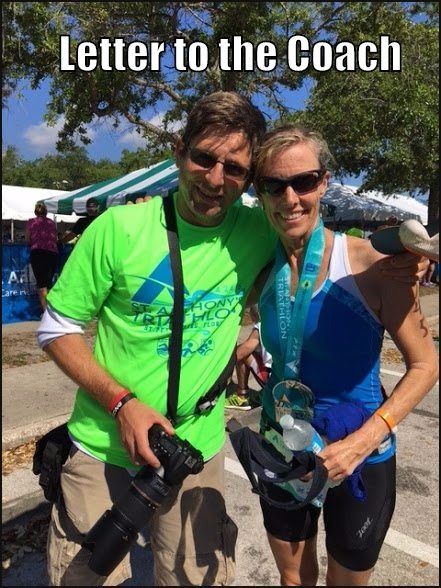
I have been an endurance coach for some time now. Once in a while, I receive an email from a client which chokes me up with pride. Today, I received one of those letters, so instead of sharing it...
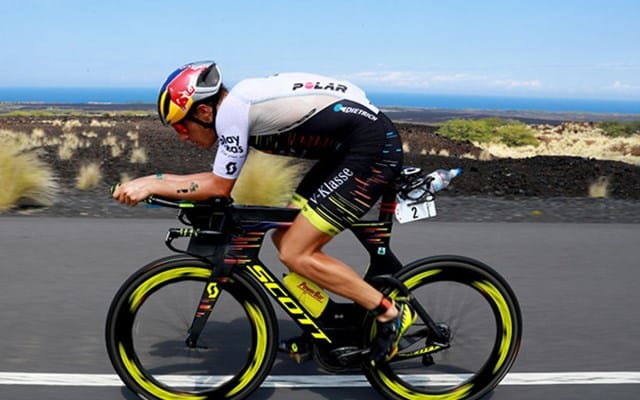
I found when looking for ways to get faster on the bike, is that there is so much information, from different coaches and experts, that it can be confusing and overwhelming. Personally, I...
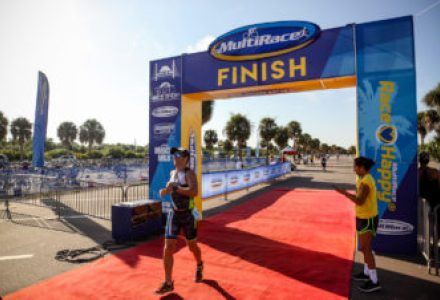
The previous post was a review of the FD3 Triathlon Series as if it was a product. Below you will find a more detailed account of my personal experiences during the race. Let me know in the...
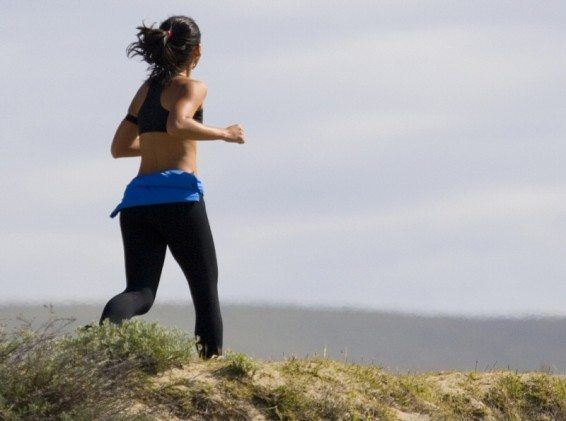
I can hear it now….”Know wonder they call you a Goof…you are crazy.”, “So, if I run slower I will get faster? You are out of your mind.” It was not to long ago I used to think the same thing, but as with everything I post, there are reasons and science to back it up.
Let’s face it, logic would dictate that pushing the pace of your easy days, as close to race pace as possible, would help you get fit faster and help you speed up, right? A lot of coaches, including myself, will tell you to run slow on your easy days, and easy days should be making up anywhere from 50-75% of your weekly mileage.
I have clients continuously asking me, “why are my easy days so slow?” The latest is my famous sit downs with my runners telling them to slow down after examining their data and finding them running tempo speeds during an easy day.
The answer to the question is what Arthur Lydiard and most other coaches would call the aerobic system. The aerobic system, or aerobic development, is the one of the most important fundamentals into unlocking your true potential.
Let us first check the stats on the energy contribution the aerobic system provides for races. As you can in the chart below, even the shorter events like the mile, over 80% of the energy required to run the race is produced via the aerobic system.
Aerobic training is the scientific fact that to move your body at higher intensities, the body needs to break down sugar and convert it to glycogen so it can be used as energy.
The aerobic system plus oxygen starts a chemical reaction known as Aerobic Glycolysis which continuously powers continuous endurance activities. In the aerobic system energy ATP is produced through Pyruvic Acid and Lipid/Protein fragments entering the Kreb Cycle and the Electron Transport Cycle.
Uh…what?
During aerobic respiration (yeah, that’s breathing) the body uses all the oxygen it needs to power the muscles. When you are running in your “aerobic zones” (easy runs), your muscles have enough oxygen to produce all the energy they need to perform.
See? Improving your capacity to transport and efficiently use all the available oxygen to produce energy will enable you to race faster since this makes up 85-99% of the energy needed to race.
Since running easy is aerobic development, what better way is there to train the aerobic system? There is none.
Capillary development – capillaries are the smallest of the body’s blood vessels and they help deliver oxygen and nutrients to the muscle tissues while exporting waste products out. The larger the number of capillaries you have surrounding each muscle fiber, the faster you can transport oxygen and carbohydrates to your muscles.
Aerobic training (easy running) increases the number of capillaries per muscle fiber, thus improving how efficiently you can deliver oxygen and fuel to your working muscles and how quickly they can clear waste products.
Myoglobin is a protein in the muscles that binds the oxygen that enters the muscle fiber. When oxygen becomes limited during intense exercise, myoglobin releases oxygen to the mitochondria to produce more energy.
The more myoglobin you have in the fibers of your muscles, the more oxygen is transported under aerobic stress. Like, uh, during a race. Aerobic training increases the amount of myoglobin you have in your muscle fibers.
Mitochondria are microscopic organelle found in your muscles cells that contribute to the production of ATP (energy). In the presence of oxygen, mitochondria breakdown carbohydrate, fat, and protein into usable energy.
Therefore, the more mitochondria you have, and the greater their density, the more energy you can generate during exercise, which will enable you to run faster and longer.
Aerobic training increases both the number and the size of the mitochondria in your muscle fibers.
Suffice it to say that aerobic development is the single most important factor to long-term development.
Of course, track workouts, VO2 max sessions, tempo runs and cross training will increase your fitness and are still incredibly important to racing faster. However, nothing will help improve continuously like developing the aerobic system.
Aerobic development is dependent upon running in your aerobic zones (for my runners Zones 1-3). This is why running faster on your easy days develop the aerobic system. Once you step out of those aerobic zones, on easy runs you diminish development of your aerobic system, but you also increase the chance for injury. Nope, two negatives do not make a positive in running.
This is one of the single biggest mistakes runners of all experiences make in their training.
As a coach and trainer I have always distinguished myself because I am always able to give my clients and readers the “why”. (Sometimes my clients end up telling me to just shut my mouth. when I am training with them because I am continuously telling them why they are doing each movement of an exercise or workout. I guess it may not be an advantage all the time. Go figure.)
Scientific research has been able to identify how the aerobic system adapts and responds to certain training paces. Physiologically we know:
It is pretty clear now right? Your optimal easy run pace for aerobic development is between 55 and 75 percent of your 5k pace, with the average pace being about 65 percent.
It’s also evident that running faster than 75% of your 5k pace on your long run has very little additional physiological benefit.
In fact, the research indicates that it would be just as advantageous to run slower as it would be to run faster. Running around half of your 5k pace is pretty easy right? Wouldn’t you know it, the evidence is clear that it still provides near optimal aerobic development.
Feel free to let me hear your feedback. I welcome any other case studies, personal experiences and other research as I am always learning. I provide you with the best content I can, but I have an open-mind and know that there may be other research out there that may negate information I post.
~IronGoof
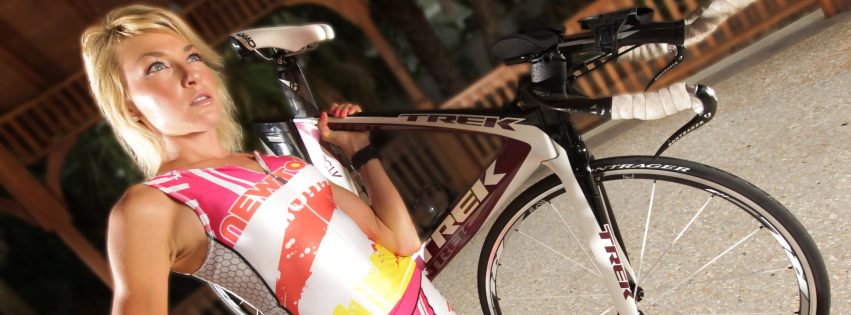
It was apparent this was coming, right? This woman was all over my Rock ‘n’ Roll recap, so the 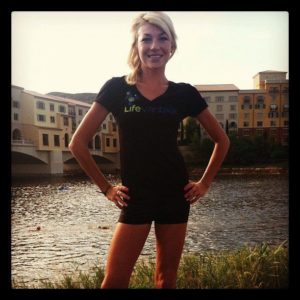 inspiration was already foreshadowed and if you didn’t read the last post, then prepare to be inspired.
inspiration was already foreshadowed and if you didn’t read the last post, then prepare to be inspired.
Jessica and I met on a set of commercial we were doing for some insurance company. I never actual saw the final cut, but then again, that happens quite frequently. We were actually placed in the roles of runners, which is why it made so much sense. I was in a conversation about running and all of the sudden, I heard this upbeat, sultry voice from behind me enter into the conversation. I turned around to see this tall, athletically thin, beautiful blond woman behind me. Her hair in a ponytail, wearing a Newton visor and radiating the intense positive aura all around her. There was more to this attraction then the minimalistic pure blood American male to the tall, stunningly gorgeous, platinum blond female(See? I am not denying the obvious). The energy radiating from this woman was intense.

We conversed in detail all the while waiting for the lighting to be rigged, and shots set up. I came to find her life as intoxicating as Jessica herself. This woman is an Elite Runner holding course records in the Gasparilla Half-Marathon, St. Pete Women’s Half-Marathon and the St. Pete Rock ‘n’ Roll Half-Marathon. As of last year she began competing in triathlon only to make it to Las Vegas for the 70.3 World Championships her first year. If that wasn’t enough, she also coaches other elite athletes, has her own marketing company, and recently created her own Not-for-profit. She is committed to giving back.
As I have continued to attempt climb inside her head and soul to try and understand what drives her, I have yet to hear her utter a negative word about anything or anyone. She truly believes in winning not only the race, but in life itself. If there is ever the opportunity to meet this unbelievable athlete and woman, do so. Before you know it, you will be winning to. Let me introduce you to my good friend, Jessica Crate.
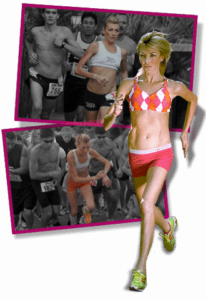
 world for racing, training and competing. Being awarded a full-ride scholarship to two D1 Schools for both athletics and academics was not only a blessing, but I felt it a responsibility to essentially “Give Back” all that had been given to me. Upon graduating from college, I partnered with Olympic athlete, Jon Rankin, to launch our own Non-profit organization entitled “Giving Athletics, Inc”, who’s mission is to “Inspire Social change through athletic participation.” It has been so rewarding to help others by fitting them with clothes and shoes that allow them to participate in sports and gain an education. 🙂
world for racing, training and competing. Being awarded a full-ride scholarship to two D1 Schools for both athletics and academics was not only a blessing, but I felt it a responsibility to essentially “Give Back” all that had been given to me. Upon graduating from college, I partnered with Olympic athlete, Jon Rankin, to launch our own Non-profit organization entitled “Giving Athletics, Inc”, who’s mission is to “Inspire Social change through athletic participation.” It has been so rewarding to help others by fitting them with clothes and shoes that allow them to participate in sports and gain an education. 🙂
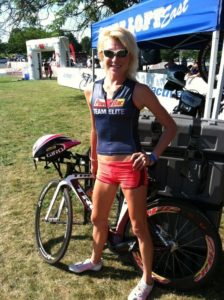 had raced several marathons already, but my coach believed I was ready based on my workouts and marathon times. However, at mile 14, I side- stepped around some runners at a water station and snapped my foot. The adrenaline, high pain tolerance and my will to finish wouldn’t let me quit, so I ran the last 12.2 miles on a broken foot. I requalified for Boston, but obviously did more damage to my foot by continuing the race. My Olympic Trials dreams were shattered and I was now in a boot, unable to run. I began physical therapy and realized that I was going to go crazy if I couldn’t run, so I picked up swimming and cycling. Long story short, I started sprint triathlons, qualified for USAT Age Group Nationals in the ITU distance and soon I was embarking on tri training. I ended up qualifying for the USAT ITU World Championships and setting new goals, like Ironman 70.3. Now, here I am! Runner turned Triathlete 😉
had raced several marathons already, but my coach believed I was ready based on my workouts and marathon times. However, at mile 14, I side- stepped around some runners at a water station and snapped my foot. The adrenaline, high pain tolerance and my will to finish wouldn’t let me quit, so I ran the last 12.2 miles on a broken foot. I requalified for Boston, but obviously did more damage to my foot by continuing the race. My Olympic Trials dreams were shattered and I was now in a boot, unable to run. I began physical therapy and realized that I was going to go crazy if I couldn’t run, so I picked up swimming and cycling. Long story short, I started sprint triathlons, qualified for USAT Age Group Nationals in the ITU distance and soon I was embarking on tri training. I ended up qualifying for the USAT ITU World Championships and setting new goals, like Ironman 70.3. Now, here I am! Runner turned Triathlete 😉
If you’d like more information on where she will be next or to sign up for a training session, contact her at [email protected]

 My coaches all have always tried to instill in me the importance of a good night sleep. Especially as the intensity and duration of my workouts have been increasing. The issue for me is that I have a phobia of growing older. What does one have to do with the other? I always feel like I am wasting my life away by sleeping. Think about it. As athletes we all want to experience life to the fullest which is why we train and race. Sleeping is eight-ten hours of time we could still be experiencing life and what the heck are we doing but laying there. What a waste! Or is it?
My coaches all have always tried to instill in me the importance of a good night sleep. Especially as the intensity and duration of my workouts have been increasing. The issue for me is that I have a phobia of growing older. What does one have to do with the other? I always feel like I am wasting my life away by sleeping. Think about it. As athletes we all want to experience life to the fullest which is why we train and race. Sleeping is eight-ten hours of time we could still be experiencing life and what the heck are we doing but laying there. What a waste! Or is it?
With an anticipated two Ironman Triathlons on the horizon for me, I decided to dig a little deeper and find out what happens during sleep and what benefits it gives us. I am not talking about the regular answers that we hear all the time; “it recharges the body”, “muscles grow during sleep not during workouts”, yada yada yada. I am not going to bore anyone with the “What is Sleep?” lecture. We all received that in high school biology and health class. I am just going to hit the nitty gritty about why we as athletes may need more sleep, because that is what I wanted to know.
Hormones & Muscle
During our waking hours, the body burns oxygen and food to provide energy. This is known as a catabolic state, in which more energy is spent than conserved, using up the body’s resources. When we sleep we move into an anabolic state – in which energy conservation, repair and growth take over. Levels of adrenaline and corticosteroids drop and the body starts to produce human growth hormone (HGH).
A protein hormone, HGH promotes the growth, maintenance and repair of muscles and bones by facilitating the use of amino acids (the essential building blocks of protein). Every tissue in the body is renewed faster during sleep than at any time when awake.
Immune system
I have always heard that sleeping more when fighting infectious illness aids recovery. Getting enough sleep can also help resist infection, as some studies of healthy young adults have shown that moderate amounts of sleep deprivation reduce the levels of white blood cells which form part of the body’s defense system.
A killer of cancer called TNF – tumour necrosis factor – also pumps through our veins when we are asleep. Research has shown that people who stayed up until 3am had one-third fewer cells containing TNF the next day, and that the effectiveness of those remaining was greatly reduced. So that little factoid hit me over the head like a ton of bricks.
JUST as the world is governed by light and dark, human beings also have an inbuilt body clock called the circadian rhythm. The circadian rhythm regulates all the processes of the body, from digestion to cell renewal.
Body temperature
Body temperature falls throughout the night. By about the sixth hour of sleep it has dropped to about three degrees below the temperature it was in the evening. At the same time, our metabolic rate drops too which if you’re trying to lose weight may not be a good thing, but it serves a purpose.
The skin  The top layer of the skin is made of closely packed dead cells which are constantly shed during day. During deep sleep, the skin’s metabolic rate speeds up and many of the body’s cells show increased production and reduced breakdown of proteins.
The top layer of the skin is made of closely packed dead cells which are constantly shed during day. During deep sleep, the skin’s metabolic rate speeds up and many of the body’s cells show increased production and reduced breakdown of proteins.
Since proteins are the building blocks needed for cell growth and for the repair of damage from factors like ultraviolet rays, deep sleep may indeed be beauty sleep.
Digestive system
The body requires a regular supply of energy and its key source is glucose(sugar). This is constantly burned up to release energy for muscle contraction, nerve impulses and regulating body temperature. When we sleep, our need for these energy reserves is marginal so the digestive system slows down to a sluggish pace. The immobility of our bodies promotes this. Hence, the reason for not eating too late. The acid and enzyme levels have dropped to a point where food is not digested as quickly.
Maybe all those coaches were right. We produce HGH to repair muscles, our immune systems fight cancer and diseases, our skin repairs itself and our digestive system cuts out, so we do not need to burn any sugar. It sounds like I have been looking at this all wrong. I should be sleeping in order to extend my life. Can you say epiphany? (Hopefully you can say it better than I can spell it. It didn’t come up in spell check)
After all the reading on sleep I have completed, I am really tired. Maybe I ought to get some sleep.
I have come to the realization that even I, as the epitome of the positive mental attitude, still hear those negative voices in my head. For all the conversations I have with clients, friends and other athletes about going out and just having fun, I still have grand notions of finishing races with a PR(personal record) and while working out this week those goals seem daunting.
I had three Lactic Threshold tests I had to complete this week; one each for swimming, biking and running. While just doing these tests I felt like I was really out of shape, and truth be told, I did take an off season for the last couple of months, at least by triathlete standards. I did complete at least 5 hour long workouts a week with a half-marathon and a 10k thrown in there, and, oh yeah Ragnar, but I wasn’t in “training” mode per say. This week I started back “in training” and my goals seem so far off and this is only my third day.
Monday, I completed my Bike and Run LT tests which consisted both of a 10 minute warm up, followed by 40 minutes of the event at a pace that burned my legs and put me into a feeling of oxygen deprivation but not so much that I couldn’t complete the full 40 minute main set which was then followed by a 10 minute cool down. My running LT is 173 and my biking LT is 165. I looked into my future workouts they are noted with requirements that include the LT. For instance: Bike 12×1 minute climbs at LT+10, meaning I should be climbing and my heart rate should be 175. Sounds like fun doesn’t it? I know my body will acclimate, hopefully I won’t make a mess before it does.
Tuesday, I completed my first bike workout and strength workout. The bike was 8-12×1 minute climbs in the saddle at a RPM of 50-60. Now my normal riding RPM is 85-95, so you can imagine the resistance that had to be on the bike. I ended up doing it on the spin bikes at LA Fitness, because, well, there are no hills in my general vicinity which is Tampa, Florida. Nothing but flatland here. I have to travel 45 miles north to San Antonio to get any resemblance of some hills, and during the week, that just is not happening. Why? I have a responsibility to this activity called “work”. I wish I could sit here, blog and comment all day, but unfortunately I cannot. I blog in between meetings, lunch and then edit when I can. This workout while being fun, was what I would call, THE QUAD KILLER. It was brutal.
Unfortunately, I was late getting to the gym so I was not able to get my strength workout in, so I showered, drove to work and then returned that evening. Luckily, I always have an extra set of workout clothes in the car. (I think I got that from Ben Mena. He is notorious for spontaneously telling his girlfriend to just drop him off 10-15 miles from home and after changing into a spare set of shorts and shoes he runs home.)
I haven’t worked out with weights in a while, and I know from my studies of the anatomical makeup of muscles and the neurological systems of the body that there is a “breaking in” period no matter how much experience you have lifting. In order to activate the pleasure center of my brain instead of the pain center, I had to drop the weight down and do the exercises concentrating on good form. It was a circuit of 5 supersets and it was not easy, no sir, not easy at all. Deadlifts, pull-ups, squat to overhead thrusts, medicine ball wood choppers, side planks, cable twists and more. I felt beat to death afterwards. Of course, I understand my body enough that I had to stretch very well afterwards or my back would be yelling at me later.
I also learned why I really enjoy working out in the morning. It was extremely busy at the new South Tampa LAF last night. I barely got a parking space, and I ended up having to do most of the movements in a tiny little space, while other members were just waiting to pounce. It was at that point I read myself the riot act and vowed that no matter how much I had to do during the week, I would just wake up early to finish all of my workouts in the mornings.
That vow started this morning as I was up at 4:30 and ready to leave at 5 even though my first workout was track at UT which didn’t start until 6. That workout was brutal as well; 800-400×3-1mile-400×3, at least this week I didn’t falter until the last 400 and only by a couple of seconds. As soon as I finished and cooled down I headed to LAF to do my swim T-test. Basically this is 1000 meters swam as if I was in a race and then the average time of a 100 meters is considered my T-Pace for workouts. Future workouts for example included “4×100 at T-pace – 10 seconds”. I have been working really hard on my body position in the water, but I am still really slow. (Notice I am not mentioning what my T-Pace actually is.) With a pull buoy or fins, I can go forever at 1:50 min per 100m, but without I am…well…a little slower.
After going through all of this, I guess I feel like I should. There is a long journey ahead. I might as well enjoy it.